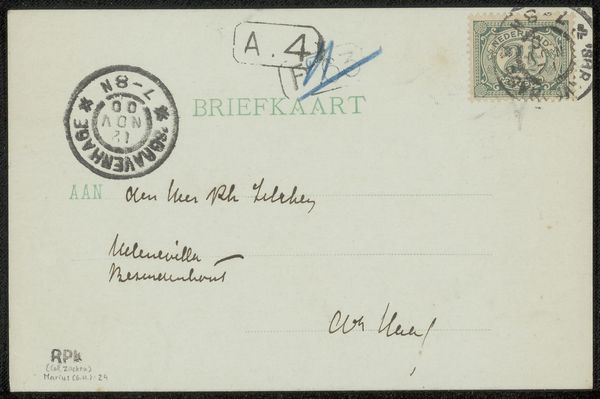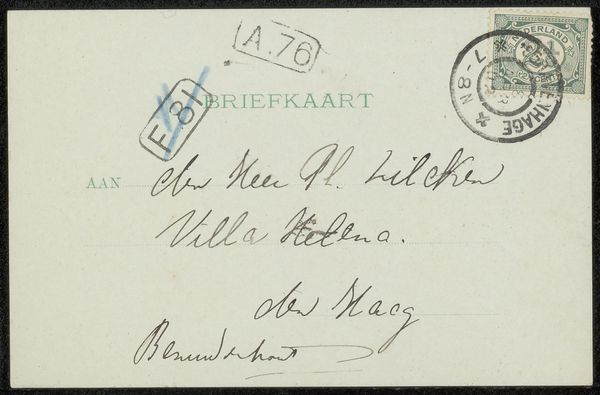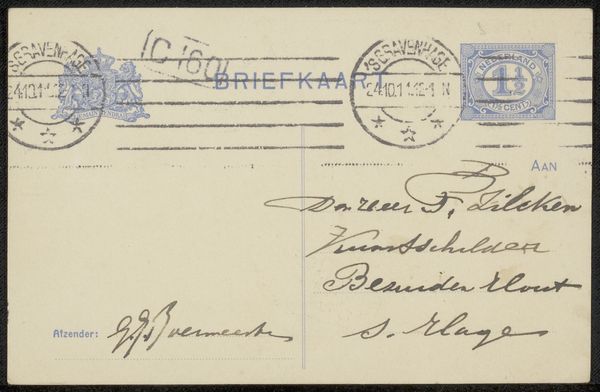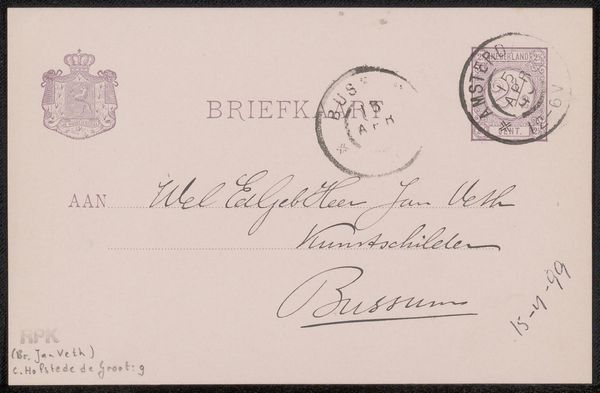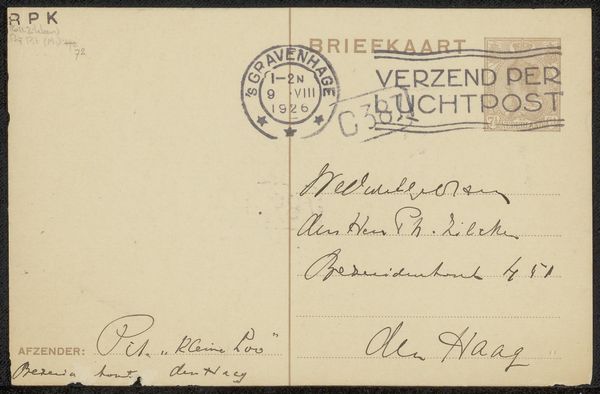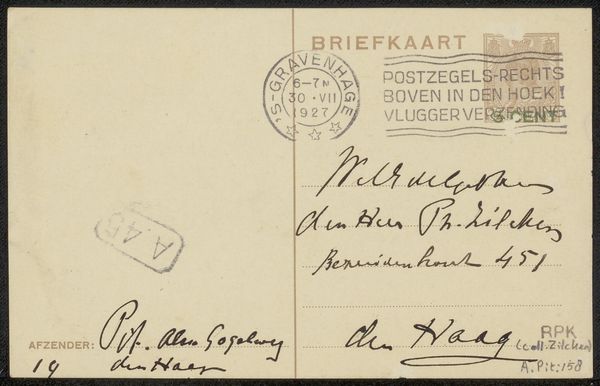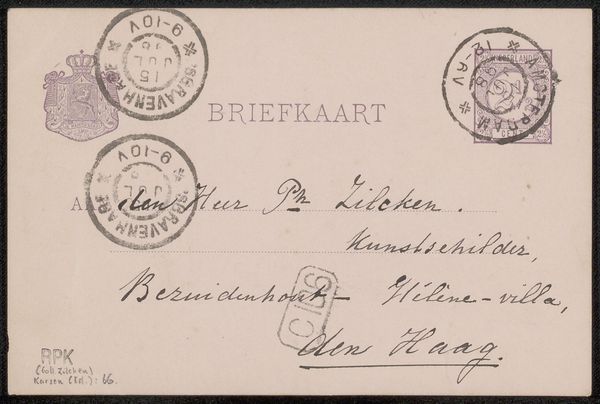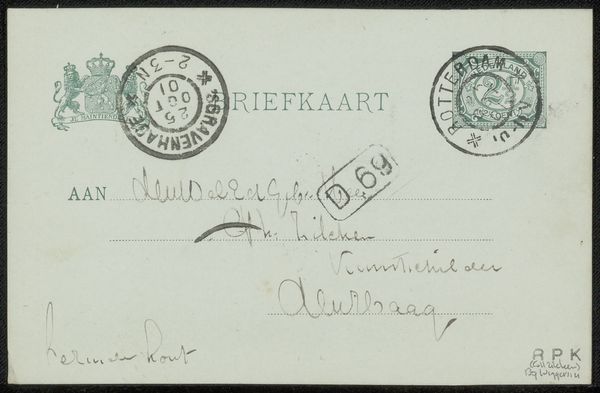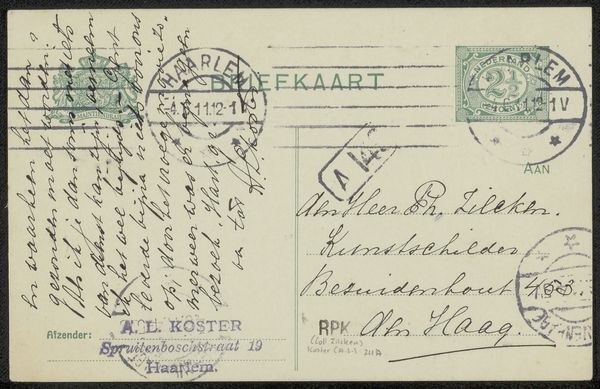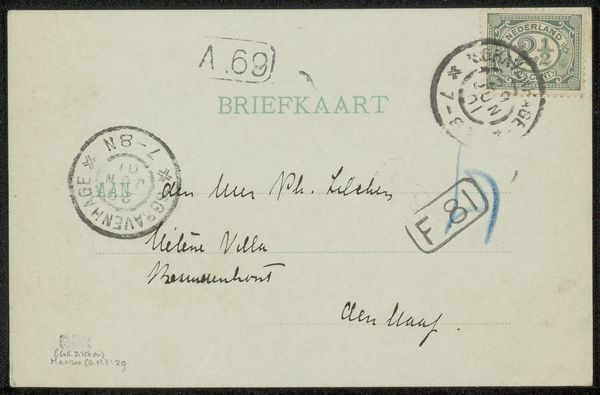
drawing, paper, ink, pen
#
drawing
#
script typography
#
hand-lettering
#
hand drawn type
#
hand lettering
#
paper
#
personal sketchbook
#
ink
#
hand-drawn typeface
#
pen work
#
pen
#
handwritten font
#
sketchbook art
#
small lettering
Copyright: Rijks Museum: Open Domain
Editor: So, this is "Briefkaart aan Philip Zilcken" by Arend Hijner, possibly from 1911-1912, made with pen and ink on paper. It's a postcard with handwriting and what seems like postal markings. The script gives off a formal but also personal feeling, maybe because it’s handwritten. What strikes you most about this piece? Curator: The materiality of the piece interests me. This postcard, likely handled and carried, connects us to a specific moment and relationship. The handwriting itself is a powerful marker of identity. We see Hijner reaching out to Zilcken, who, judging from the address, was an artist as well ("Kunstschilder"). It speaks to the networks of artists at the time. Editor: Networks... that's a good way to put it. So, it wasn't just about the message but about being part of a creative community? Curator: Precisely. Consider the time period - pre-digital, deeply embedded in physical exchange. What does it mean to physically inscribe a message, send it through the postal system? It's about visibility, exchange, but also a certain precarity, vulnerability, given the context of the early 20th century with looming global conflicts. Editor: So, it's not just a simple note, but a document of artistic exchange at a turning point in history? I see it differently now, as something more charged and poignant. Curator: Exactly! And thinking about Zilcken's identity as an artist, perhaps this postcard offered support or inspiration amidst a changing world. Every stroke of the pen, every postal mark, becomes a trace of human connection within those societal forces. Editor: This makes me consider how digital communication separates the message from its materiality. Curator: Indeed, the digital age offers instantaneity, but something tangible, something like this card gets lost. Considering that gives a whole new lens for understanding modern methods for exchanging and communicating ideas.
Comments
No comments
Be the first to comment and join the conversation on the ultimate creative platform.
